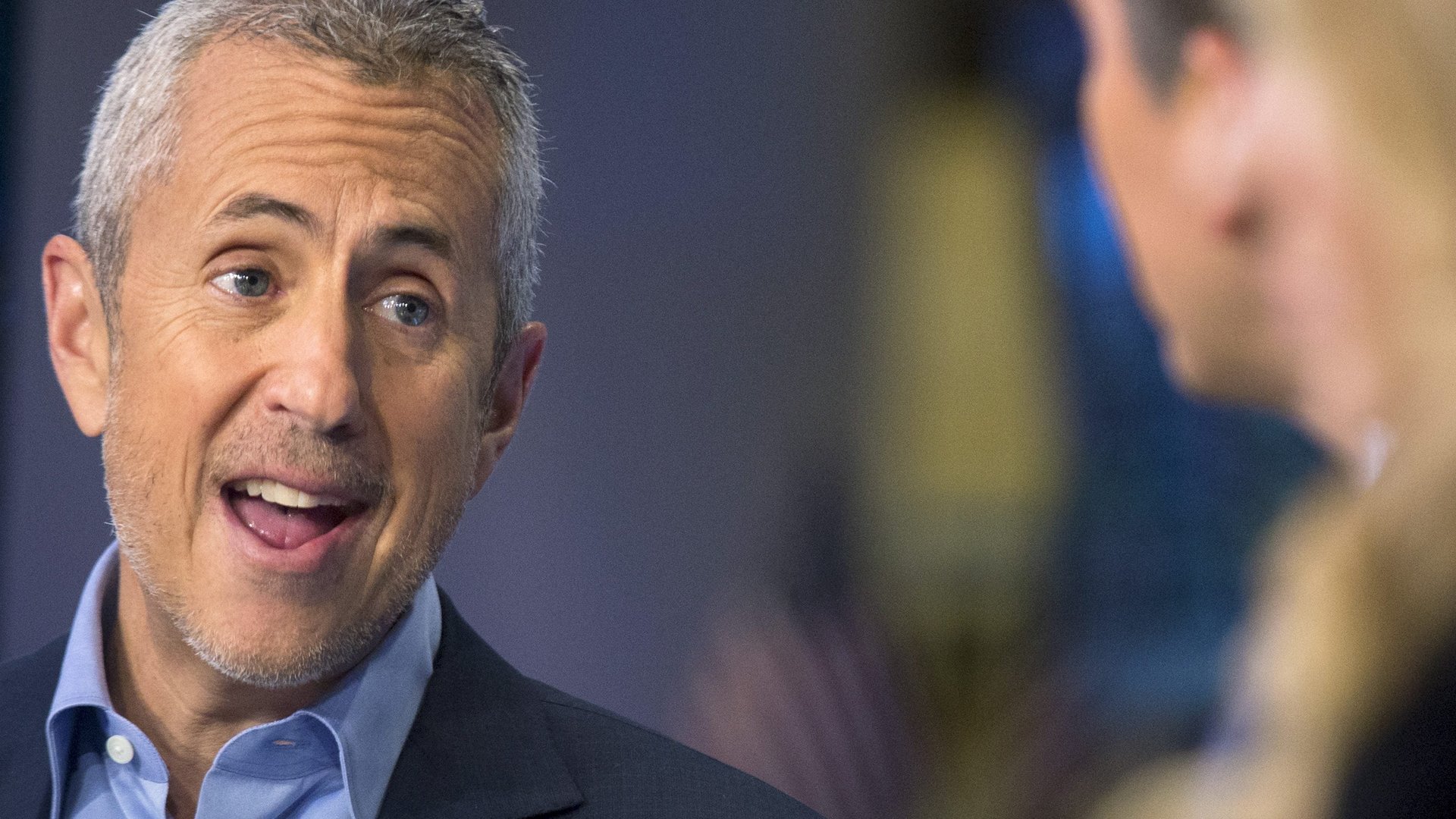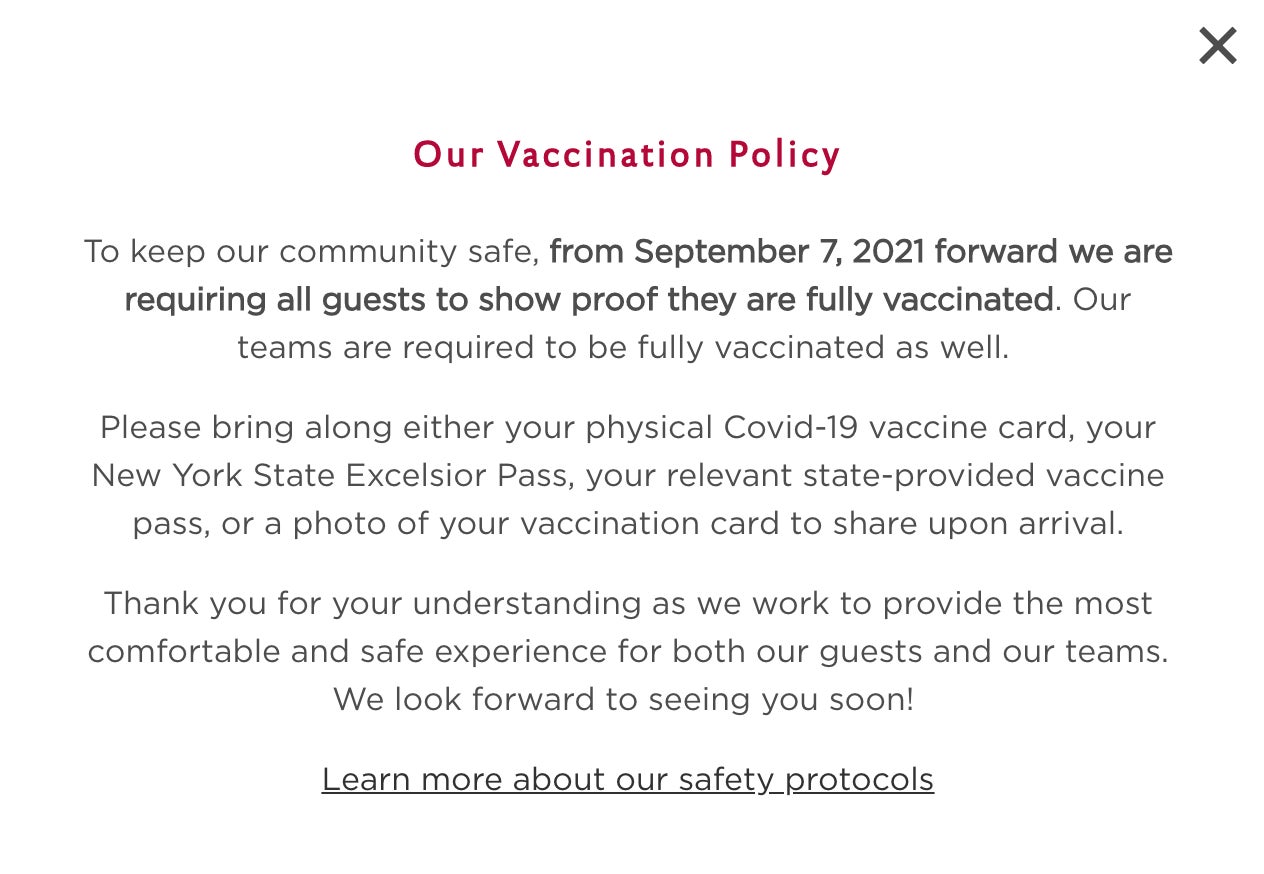Shake Shack’s founder is countering vaccine hesitancy with vaccine confidence
Danny Meyer, CEO of the Union Square Hospitality Group and the founder of Shake Shack, has made a surprising announcement: Soon, both employees and customers who want to eat indoors at one of Union Square Hospitality’s popular full-serve restaurants will need to show proof of vaccination.


Danny Meyer, CEO of the Union Square Hospitality Group and the founder of Shake Shack, has made a surprising announcement: Soon, both employees and customers who want to eat indoors at one of Union Square Hospitality’s popular full-serve restaurants will need to show proof of vaccination.
“This is the most logical thing I’ve ever seen,” Meyer told CNBC’s Squawk Box on July 29. “I’m not a scientist, but I know how to read data, and what I see is that this is a crisis of people who have not been vaccinated,” he said, referring to the current surge in Covid-19 cases due to the highly contagious delta variant. “I feel strong responsibility, on our part as business leaders, to take care of our team and our guests, and that’s what we’re doing.”
So, after spending months encouraging his staff members to get the jab, he’s now giving the small minority of employees who haven’t done so 45 days to book their appointment or leave. The company’s website also lists the documents diners will need to bring to the door as of Sept. 7, at restaurants including New York’s Gramercy Tavern and Maialino Mare in Washington DC.

Meyer’s connection to Shake Shack—he remains chairman of the company’s board—helped the news of his policy travel fast. However, the rule only applies to his higher-end restaurants in Washington and New York. Shake Shack, which went public in 2015, will make the decision that works for that brand when the time comes, Meyer said.
New vaccine mandates keep coming
Union Square Hospitality’s policy, along with others, signals a turning point in cultural norms (if not a guaranteed future mandate from Meyer’s popular burger concept). Yes, we’ve seen large venues like arenas and theaters require proof of vaccination from patrons—and endure public protests for doing so—but the big-brand companies where Americans work, dine, shop, and get haircuts on the daily have so far stopped short of requiring inoculation as a condition for entry.
Business leaders have appeared to be most concerned with appeasing the vocal group who stand against simple measures like masking indoors. (It has also been the unvaccinated who have been the most willing to venture out and spend, one study found, which would naturally lead businesses to tread lightly.)
But now, whether it’s the variant threat or the realization that vaccine acceptance isn’t growing organically, more restaurants and bars are getting on board with mandates, without knowing whether the change will encourage more foot traffic and job applications or harm reputations. Large employers like Google and Facebook also have said they will require evidence of full vaccination from employees who want to work in the office again. And US president Joe Biden just made proof of vaccination or weekly testing mandatory for all federal employees.
It’s time for business leaders and the media to show what’s working
Meyer’s framing of his new policy was a feat all its own, as he deftly managed to present his case without descending into a discussion about cultural flashpoints, polarization, and vaccine resistance in the US. Instead, he said his rule was not only “logical” from a public health perspective, but an inevitable extension of typical hygiene habits that have always defined the restaurant industry.
Even more critically, he suggested, this policy is about moving on. Dining at low capacity is “so yesterday,” said Meyer, and his vaccinated customers are ready to get back to life as normal.
Arguably, it would be wise for other businesses and organizations to follow his lead. According to Jay Van Bavel, a behavioral scientist at New York University, the process of normalizing vaccinations could speed up if the public conversation centered on the people who are getting vaccinated instead of those who are still on the fence or staunchly opposed.
Yes, the work must continue to make education and trusted information available to those who still have questions and fears. And it will take all kinds of interventions to move the needle toward herd immunity. However, says Van Bavel, making vaccination the default expectation is one way to serve everyone, including those who are ambivalent or undecided about rolling up their sleeves.
“This is one where I think the media has done a very bad job,” he told Quartz. “The media feeds on these stories through the lens of the hesitant people, but they often don’t say that a majority of [eligible] people have gotten it.”
Instead of focusing on the 8% of people who didn’t return for their second shot, for example, why not share that 92% of people who got the first shot returned for their second, he asks. It’s time to highlight people’s confidence in the vaccine’s effectiveness and general compliance.